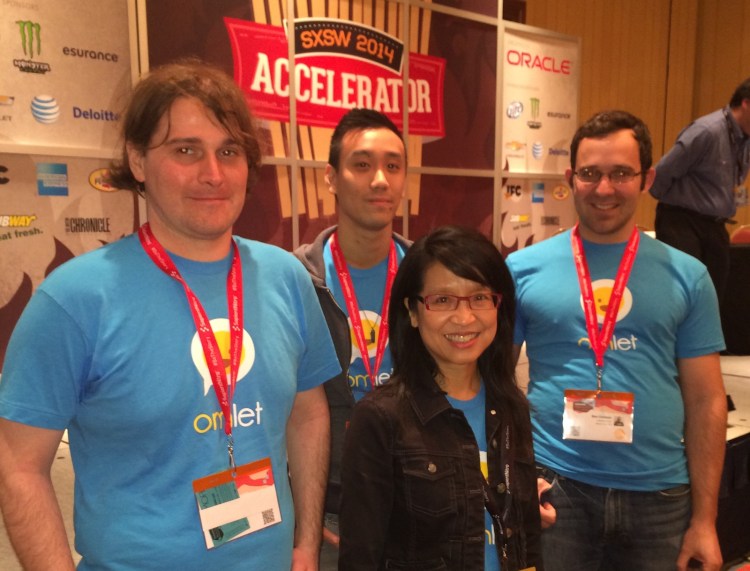If anyone tries to tell you that government grants play no role in technology innovation, point them to the field of software-defined networking.
And soon, you might be able to point them to open social networking.
Software-defined networking, or SDN, grew in large part out of research done at Stanford, led by professor Nick McKeown and a group of colleagues and graduate students, called the Programmable Open Mobile Internet 2020 (POMI) project.
That project received a $10 million grant from the National Science Foundation in 2008 to “address fundamental issues emerging in the forthcoming broadband wireless mobile revolution” and to “create an ‘open’ alternative to mobile ubiquitous computing and communication that can spur innovations.”
The POMI work, the NSF predicted, “will have a dramatic impact on the choices users will have in the way their data and information is computed, stored and communicated.”
That prediction turned to be spot on.
One of the projects that the POMI group tackled was the creation of a standard for software-defined networking: A way of configuring network routing and network addresses through software. That standard, OpenFlow, took off like a packet storm on a poorly configured router.
Three years later, in 2011, a dozen networking vendors were showing off switches based on the OpenFlow protocol pioneered by the POMI group. And in 2012, the company founded by McKeown and others, Nicira, sold to VMware for $1.26 billion. Nicira offered SDN solutions based on a version of OpenFlow.
Today, software-defined networking has been embraced by nearly every networking company, and its principles have spread into a variety of other infrastructure areas, including software-defined storage.
Pretty good return on investment for $10 million, I’d say.
From software to social networking
Nor is POMI’s work done: In addition to the networking research, POMI was also investigating the social networking layer, seeking to create a more open, configurable social network that isn’t beholden to a single vendor like Facebook or Twitter.
The fruits of that work have now been embodied in another startup, MobiSocial, which launched its first product, Omlet, earlier this month at SXSW. (That’s the MobiSocial team in the photo above.)
MobiSocial is building nothing less than a completely open, decentralized social networking tool, based on an extensible chat platform. You can use Omlet to chat with other Omlet users — or you can build your own chat applications that use the Omlet protocol.
“Chat is the killer app,” cofounder Monica Lam told me when showing off the new service.
What makes Omlet different from other chat platforms is that the company is making no attempt to keep or profit from the data transmitted on the network. MobiSocial’s servers store messages briefly before forwarding them on to their intended recipients but will not hang on to data longer than two weeks. If you share a photo with me on Omlet, it’s transmitted from your phone to mine, and stored on our phones, not on the Omlet network. If we want to keep the photos any longer than that, we can store them in Box, Dropbox, or other cloud storage services that Omlet integrates with.
“I will not monetize the data,” Lam promises. “We don’t want your data — it’s a liability to us.”
Now, the company is not making any pretensions of being a super-secure chat platform like Wickr or Silent Circle. Omlet doesn’t use encryption for its messages, and Lam acknowledges that the company will have to turn over server logs if subpoenaed by law enforcement. But because it’s an open network protocol, anyone could build a chat application using end-to-end encryption over the Omlet network, and in that case, all Omlet would have is the routing data, without access to the content itself.
In order to speed adoption, MobiSocial has struck a deal with Asus: Omlet will be integrated into that company’s low-end ZenFones, which will start shipping April 8 in Taiwan. Omlet is also being integrated into the Stanford University student app, iStanford, and Lam says it is now the preferred means of communication between the students and the university registrar. The company is in talks with other universities and smartphone makers as well.
The nature of the Omlet network is such that any of these special-purpose networks will interoperate with others — so I could use a ZenFone to communicate with someone on iStanford.
“Asus wants this interoperability… it’s like a social OS,” Lam said. As with all consumer applications, the more people using Omlet, the more successful it will be.
This is hardly the first attempt to build a social network on more open principles. Identi.ca and Diaspora are both attempts to be an open-source, distributed service, but neither has found much traction. App.net, started by veteran entrepreneur Dalton Caldwell, is an attempt to build a chat-based social platform that app makers can build upon — it hasn’t exactly taken the world by storm either.
Unfortunately, the 1.23 billion active users of Facebook and 240 million active users of Twitter represent an enormous and almost immovable advantage that Omlet will find it very difficult to overcome. Many people might give lip service to their discomfort with social media companies storing personal data and selling it to marketers; but if all your friends are on Facebook, you’ll keep using Facebook.
Still, the tremendous success of SDN is an indication that there is a hunger — at least in enterprise networking circles — for more open, flexible alternatives. Perhaps there is a similar opportunity in consumer social networking.
VentureBeat's mission is to be a digital town square for technical decision-makers to gain knowledge about transformative enterprise technology and transact. Learn More




![Reblog this post [with Zemanta]](http://img.zemanta.com/reblog_e.png?x-id=95a19c53-7b0a-4664-9fdb-24b0ee03e443)
